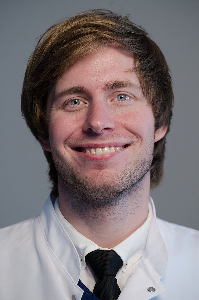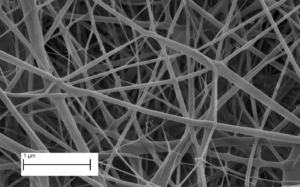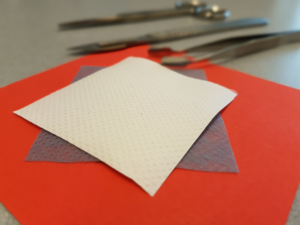
PhD student Jostein Grip is researching and developing a new dressing concept that will cause slow healing wounds to heal in a collaborative project between the University of Tromsø and Biotec BetaGlucans AS. The new dressing is developed from Woulgan gel which contain an active beta-glucan component that can reactivate and accelerate the wound healing process by activating white blood cells in the wound. The Beta-glucan we use is isolated from yeast and is produced by the Tromsø company Biotec Beta-Glucans. It is well documented as a bioactive substance and has been proven to be particularly effective on ulcers, Grip explains.
Ulcers can lead to amputations and a shortened life expectancy
Through the PhD project, sponsored by the Research Council of Norway, the University of Tromsø – Norway’s Arctic University and Biotec BetaGlucans AS have joined forces to solve an “neglected” problem. Wound treatment has traditionally had a low status and the challenges associated with slow healing wounds has often been overlooked despite a major negative impact on the patients quality of life. In extreme cases, such wounds can end up with amputation and ulcers are also associated with a shortened life expectancy explains Grip. A large proportion of the wound patients are elderly people without a strong lobbying organisation who will speak on their behalf to demand more research and development of better and more effective treatment regimes, as opposed to, for instance, cancer research. However, wound treatment constitutes one of the largest cost in the health sector and strongly affects the quality of life of this patient group. “To put it in perspective; Some cancer patients develop wounds as a side effect of their cancer treatment and many of these patients have stated that the wounds have a greater negative impact on the quality of life than the cancer itself, “says Grip. This because the wounds can be very painful with strong odour which can cause the patients to isolate themselves. Also, the dressing changes can be very time consuming, limiting the daily tasks of the patient.
From lab to clinic
To potentially help wound patients and increase their quality of life and a chance of a wound-free day to day life is a great motivation for Grip in his doctoral thesis. The thesis builds on previous work from the University of Tromsø and Biotec BetaGlucans, where beta-glucans have been researched and optimized for commercial use in wound care by Biotec. There is a jungle of wound dressings on the market, yet the number of wounds has not been reduced, but are expected to increase in the future. In addition to the fact that wounds have complex underlying causes, perhaps a contributing factor is that the existing wound materials are not effective enough or easy enough to use, Grip asks. “To my knowledge Woulgan is the only advanced wound therapy that interacts with the immune system and affects the cells responsible for directing the healing process.”


Left hand side: picture of beta-glucan nanofibers. Right hand side: Prototype of dry dressing incorporating beta-glucan nanofibers
USA use more advanced therapies compared to Europe
In Europe, less advanced wound therapies are used when compared with the United States, where so-called cell-based therapies or biologics are more extensively used. This is the largest wound market in the world and is thus very attractive for active wound products like Woulgan. A limitation for Woulgan is its gel format and as such shouldn’t be used on wet and highly exuding wounds, which are characteristic for some chronic wounds. Adding a gel to very wet wounds can cause problems with maceration of the wound edges. Excess fluid also reduces the wound’s ability to heal, explains Grip. The individual therapist’s preferences when it comes to dressing choices also factor in, where some prefer dry dressings over gels.
Easy to use, but advanced and effective mode of action.
It is also important that the therapies are easy to use, easy enough that they do not require special equipment or specialist training to use. This is important since the majority of the dressing changes are performed in the communities, where, in contrast to hospitals, the access to advanced equipment is limited, says Grip. It is also more cost-effective if the treatment can be performed at home instead of the patient taking up hospital beds just for the sake of dressing changes or if the patient or relatives can do some of the dressing changes themselves.
During his doctorate, Grip has been working to develop a dry wound dressing based on the Woulgan technology. After a lot of testing and optimization, a prototype is now available, which has shown excellent wound healing effects in pre-clinical tests (animal models). The dry dressing could offer an advanced treatment employing biological principles that influence the immune system to heal slowly progressing ulcers, yet at the same time come in an easy to use format. “Everyone is able to put on a dressing,” says Grip. There is still more work in terms of manufacturing and industrial scale up as well as the approval process by the authorities before the dressing is available on the market, but the potential is high. “I think we owe the wound patients the very best products we can make” Grip smiles.
